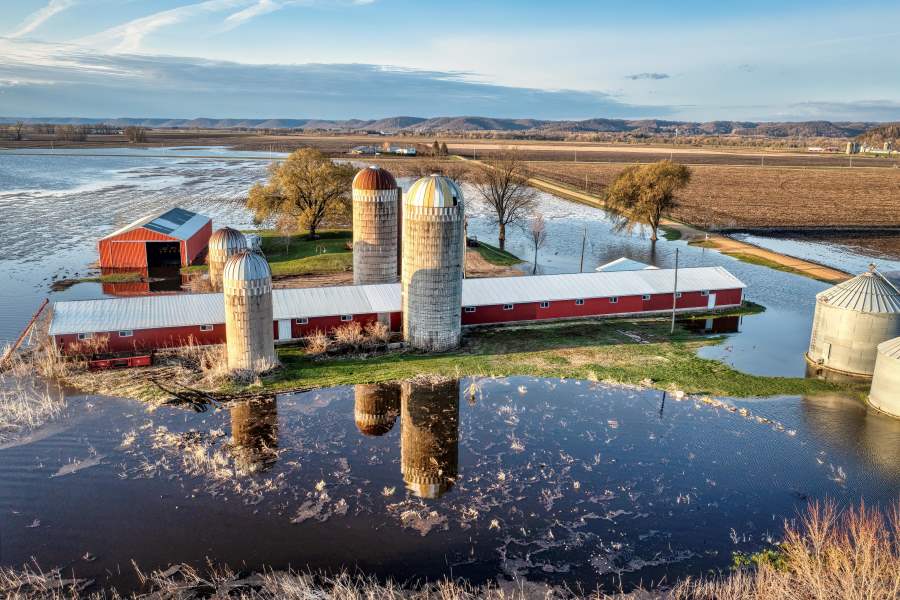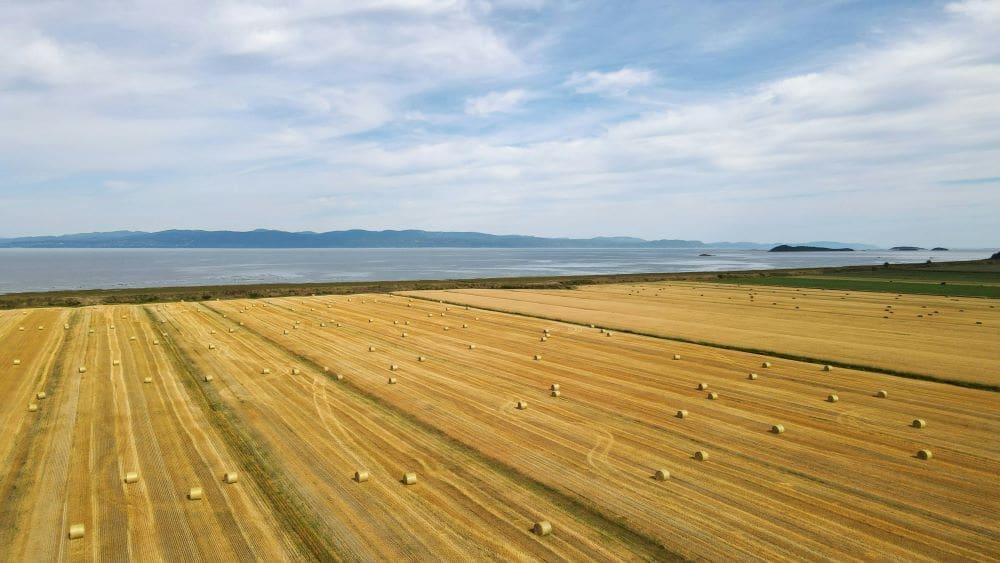Summary:
As sea levels rise and saltwater creeps into croplands, millions of coastal farmers are being forced into a tough decision: stay and adapt, or leave everything behind.
A new study presented at the EGU General Assembly 2025 by researchers from the Institute for Environmental Sciences at Vrije Universiteit Amsterdam introduces DYNAMO-M, a global agent-based model that simulates how 13 million farming households may respond to coastal flooding and salinization through 2080. Focusing on households in 1-in-100-year floodplains across key agricultural regions, the model examines how farmers growing 23 major food crops will weigh the options of absorbing financial losses, adapting with salt-tolerant crops and elevated housing, or migrating inland.
The simulation, grounded in economic decision-making theory, assesses risk each year by combining coastal flood hazard data, crop exposure, and household vulnerability. Key migration hotspots include coastal areas of Florida, New York, Oregon, Japan, China, the Philippines, and Italy.
In addition to predicting farmer responses, DYNAMO-M tests the effectiveness of policy interventions like insurance coverage and adaptation aid. The study offers a powerful new lens for governments, development agencies, and insurers confronting the human dimensions of sea level rise. The work was presented in full at EGU General Assembly 2025 Session HS5.2.3 on May 2, 2025.

How will 13 million farmers fight back against sea level rise?
New global model simulates adaptation, migration, and survival in the face of climate crises.
Researchers from the Institute for Environmental Sciences (IVM) at Vrije Universiteit Amsterdam have unveiled DYNAMO-M, a groundbreaking global agent-based model that projects how farmers across the world’s coasts may respond to the growing threat of coastal flooding and salt intrusion due to sea level rise (SLR). The model, which was presented at the EGU General Assembly 2025 in Vienna, offers new insights into the challenges faced by 13 million farming households globally.
Using decision-making logic rooted in discounted expected utility (DEU) theory, DYNAMO-M doesn’t just forecast physical impacts — it simulates real human choices: stay and absorb losses, adapt with salt-tolerant crops and elevated homes, or migrate inland. These decisions play out year by year, crop by crop, from 2020 through 2080, covering 23 major food crops in flood-prone areas worldwide. “Rising seas are forcing a decision: stay, adapt, or migrate,” says lead researcher Kushagra Pandey.
The stakes are enormous. Rising salinity and floodwaters are already slashing crop yields and farming income. DYNAMO-M identifies hotspots of future migration, with vulnerable coastal regions in Florida, New York, Oregon, Japan, China, the Philippines, and Italy likely to see major shifts in population and land use. Notably, the model also highlights areas within 1 in 100 year floodplains, which are at particular risk.
But it’s not all doom and displacement. The team also tested insurance schemes and government support policies in the model, revealing that smart interventions could significantly reduce the pressure to migrate and help communities stay and thrive despite the rising tides. “Small subsidies can significantly enhance adaptive capacity and reduce migration driven by sea-level rise,” continues Kushagra Pandey.
The findings push the frontier of climate risk modelling and offer actionable insights for governments, insurers, and global development agencies grappling with how to support frontline farming communities in a warming world. DYNAMO-M could be the missing link in understanding one of the most urgent and complex questions of our time: what happens when our farmlands flood — and the farmers have to choose what to do next.
***
About the EGU
The European Geosciences Union (EGU) is the leading organisation for Earth, planetary and space science research in Europe. With our partner organisations worldwide, we foster fundamental geoscience research, alongside applied research that addresses key societal and environmental challenges. Our vision is to realise a sustainable and just future for humanity and for the planet. The annual EGU General Assembly is the largest and most prominent European geosciences event, attracting over 19,000 scientists from all over the world. The meeting’s sessions cover a wide range of topics, including volcanology, planetary exploration, the Earth’s internal structure and atmosphere, climate, as well as energy and resources.
Journal Reference:
Pandey, K., de Bruijn, J., de Moel, H., Botzen, W., and C. J. H. Aerts, J. ‘How will 13 million global farming households respond to coastal flooding and salt intrusion under sea level rise? DYNAMO-M’, EGU General Assembly 2025, Vienna, Austria, 27 Apr–2 May 2025, EGU25-10487 (2025). DOI: 10.5194/egusphere-egu25-10487
Article Source:
Press Release/Material by European Geosciences Union (EGU)
Featured image credit: Daren | Unsplash




